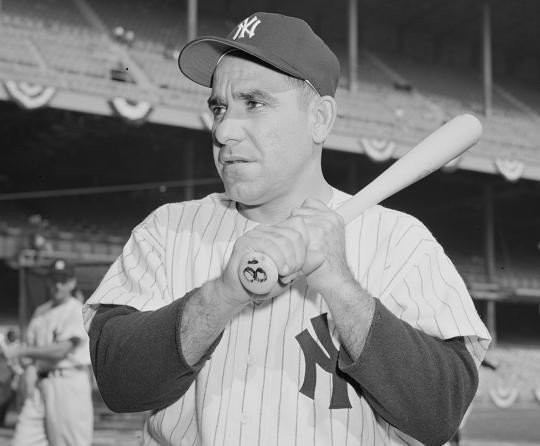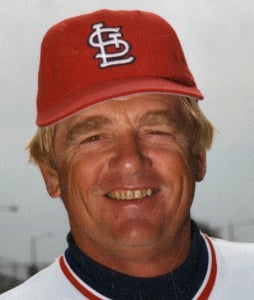- Home
- Our Stories
- Berra documentary captures essence of the Hall of Famer
Berra documentary captures essence of the Hall of Famer
“Yogi-isms” such as “When you come to the fork in the road, take it,” “Nobody eats there anymore; it’s too crowded” and “Baseball is 90 percent mental. The other half is physical” have become part of the American lexicon over the decades.
“It Ain’t Over,” a personal and revealing documentary on iconic Hall of Famer Yogi Berra, directed by Sean Mullin and distributed by Sony Pictures Classics, is currently playing in theaters across the country.
On May 25, a special screening of the 98-minute film was held at the National Baseball Hall of Fame and Museum’s Grandstand Theater. Afterward, a Q&A session was held with Class of 2022 Hall of Famer Jim Kaat, film producers Michael Sobiloff and Peter Sobiloff, and Berra’s granddaughter and the film’s executive producer Lindsay Berra.
As the tagline on the movie poster explains, “When it comes to Yogi, you don’t know nothin’.” Possibly forgotten by some over the years due in part to his famous quips – some likely to have never been uttered by the longtime backstop – Berra’s short, squat physique belied the baseball ability and talent of a three-time American League Most Valuable Player for the Yankees who was selected to 18 All-Star teams.
Elected to the Hall of Fame in 1972, the first line of text on his bronze plaque reads, “He played on more pennant winners, 14, and World Champions, 10, than any player in history.” But even Berra couldn’t resist at his Induction Ceremony that summer invoking one of his famous lines: “I guess the first thing I should do is thank everybody who made this day necessary.”
When Lindsay Berra was asked how she thought her grandfather, born in St. Louis to immigrant parents from Italy, would react to the documentary, she replied with accompanying laughs from the crowd: “I think he’d tell me to stop talking about him.”
“Seriously, I think the same thing when we got the postage stamp in 2021: I think he would be totally blown away that an immigrant kid from the Hill in St. Louis was on a U.S. postage stamp,” she said. “And if he knew that this movie was playing in 800 theaters in the country, I think it would just totally blow his mind because, again, this is a guy who would just walk around on the concourse at Yankee Stadium because it didn’t occur to him that he was famous enough that that would be difficult. He knew it. He wasn’t dumb. But he just didn’t look at himself like that and couldn’t wrap his brain around why other people did. So, I think it would blow his mind. But I think he would like it.”
According to Lindsay Berra, the idea for the documentary came from Peter Sobiloff in the summer of 2018. Soon, though, she soon got involved with ideas and contacts for people to interview such as Vin Scully and Tony Kubek. Ultimately, the impressive list of men and women to tell Yogi’s life story included, among others, Derek Jeter, Joe Torre, Mariano Rivera, Willie Randolph, Don Mattingly, Joe Girardi, Ron Guidry, Nick Swisher, Billy Crystal, Bob Costas, Suzyn Waldman, Roger Angell, sons Dale Berra, Larry Berra and Tim Berra, Bobby Brown, Al Downing, Whitey Herzog, Héctor López, Joe Maddon, Bobby Richardson, Art Shamsky, Claire Smith, Hal Steinbrenner and Ralph Terry.
“The first reviews came out of the Tribeca Film Festival last year, so it was four years in the making, and we had that little pandemic thing in the middle. We stopped shooting for like 14 months. So, it was just a really long process. I was just really excited to get it in front of folks and just have people start seeing it,” Berra said. “Right after Tribeca the next film festival was in Nantucket and our director, Sean, said why don’t you come up with me to Nantucket. And I was like, ‘Sean, it’s an island of Red Sox fans.’ So, we go and I’m thinking they’re going to throw fruit at us or something. But we ended up getting one of our best reviews out of Nantucket. And then I was like, ‘All right, if we can win over Red Sox Nation, then we’ve got something here.’”
As Peter Sobiloff explained, the pressure was on from the get-go because of Yogi’s stature and how beloved he is.
“But we also, from the very beginning, felt why do we always talk about the ‘Yogi-isms’ and the sort of funny nature and not about the ballplaying? So, from the jump what was really important to us was to sort of set the record straight, to make sure that we talk about him as a person and show you all that stuff, but it’s really also to point out that, ‘Look, this guy’s the best.’
“So, pressure aside, we felt so strongly that we’re doing the right thing. That our North Star was we want to course-correct the historical record for Yogi. And that was such a compelling thing that I don’t think we were sweating the pressure; I think we were just certain that we’ve got to get this done. And then Lindsay came aboard and changed the nature of the whole thing when she really opened all these doors for us and sort of became the focal point of the story.”
As a 23-year-old, Kaat first met Berra as American League teammates on the second of two 1962 All-Star Games.
“Growing up in the Midwest, I heard all about Yogi and the ‘Yogi-isms.’ Today, he’d be scouted out of the game. He wouldn’t get a chance. Yet he’s one of the greatest players of all time. Because what baseball people today are missing is baseball IQ, hand-eye coordination. And that’s what Yogi had,” Kaat said. “Pitching to him in those days for me was intimidating facing Yogi or Mickey Mantle because I thought about them on my trading cards. I had read about Yogi in the newspapers as a kid and just to find out what a great ballplayer he was. As a baseball player, it kind of makes me feel good that you don’t have to be an athlete carved out of marble to play baseball. You have to have baseball IQ and skills. And that’s what Yogi had.”
The Berra story includes catching Don Larsen’s perfect game in the 1956 World Series, being married to his wife Carmen for 65 years, serving in the military during World War II seeing action off Normandy on D-Day, decades as a product pitchman working for, among others, Yoo-hoo and Aflac, and his tough-love approach when son Dale was caught up in a drug scandal in the 1980s.
“When you’re making a documentary, I would say that it’s your responsibility to turn every stone over, look at pleasant and unpleasant things,” said Michael Sobiloff. “We had hoped from the get-go just to be an inspiring story about a great man, but we had to ask the tough questions like who’s got something bad to say about this guy. We need to look at every possibility. And I’ll say that nobody has – and we spoke to hundreds of people – bad things to say about Yogi Berra. It’s unbelievable.
“But the beautiful thing here, and a bit of inspiration, is that Dale is very willing to talk about it, too. I think he recognizes the inspiring power of the 30 years now that he’s been sober. And I think from the jump, we always with this movie want to make you laugh, we want to teach you something, and probably make you cry. And fortunately Dale is very happy to talk about it, and hopefully this will help people in the future.”
Lindsay Berra’s knowledge of Yogi’s place in the American psyche evolved from her first memories of a loving and doting grandfather.
“As a kid, I just thought that I knew that Grampa Yogi had a job and that his job was as a coach of the Yankees, but I didn’t know that that job was any different than my friends’ grandpas who were accountants or school bus drivers or restaurant owners or whatever it was they did,” Berra said. “By the time I was old enough, like 10, 11 or 12, I began to understand that there was something special about him and he’d done these really cool things. He’d already been Grampa Yogi for so long that even now as a 45-year-old person who certainly knows better, Grandpa Yogi is the guy that I grew up playing wiffleball in the yard with and making meatballs with at the holidays and even burned all our hot dogs at family barbecues. And Yogi Berra is the guy with the 10 World Series rings and the 18 All Star appearances.
“So Grampa Yogi lives on one side of my brain and Yogi Berra on the other side.”
Bill Francis is the senior research and writing specialist at the National Baseball Hall of Fame and Museum
Related Stories
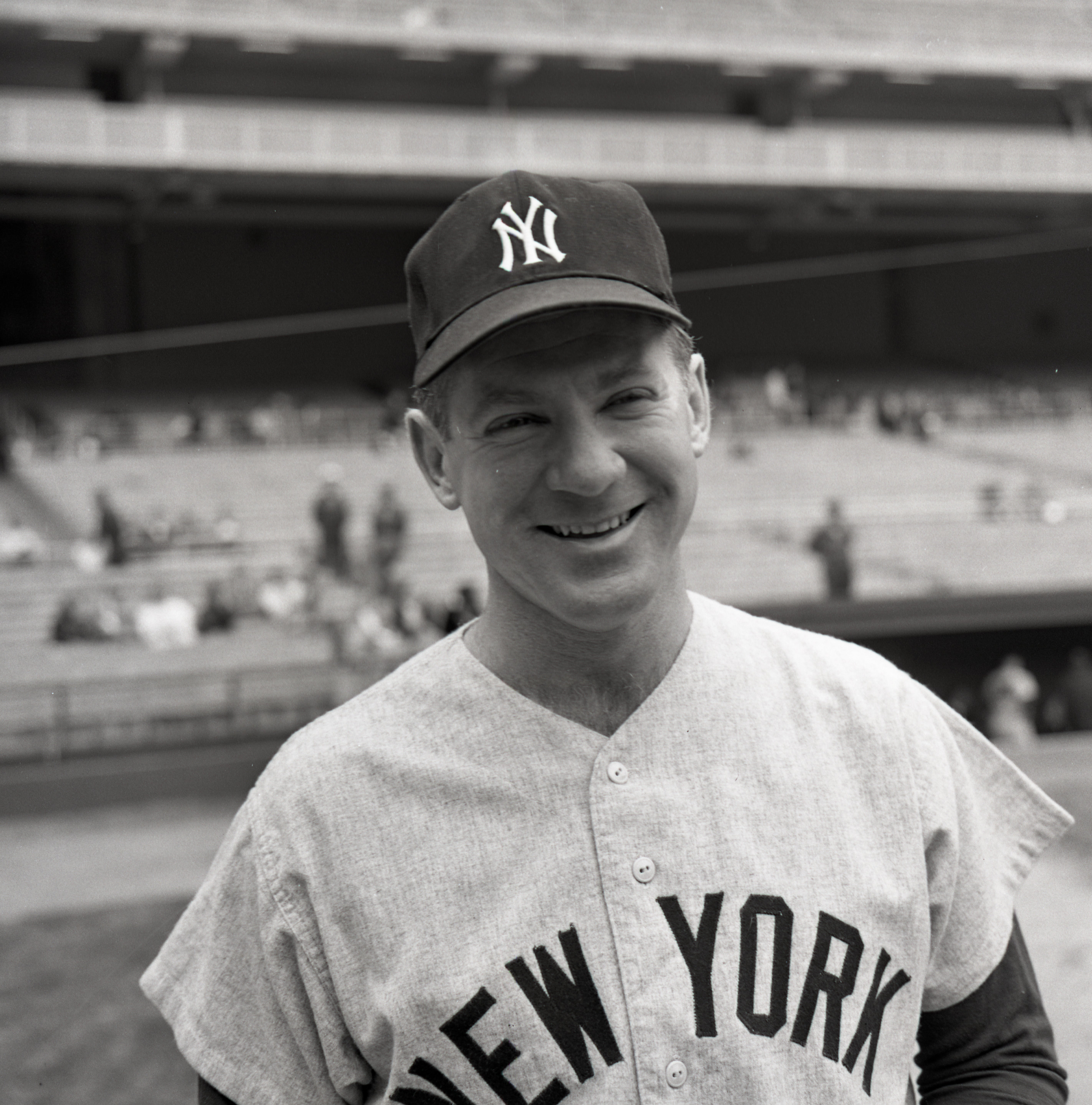
Ford ends stellar Yankees career
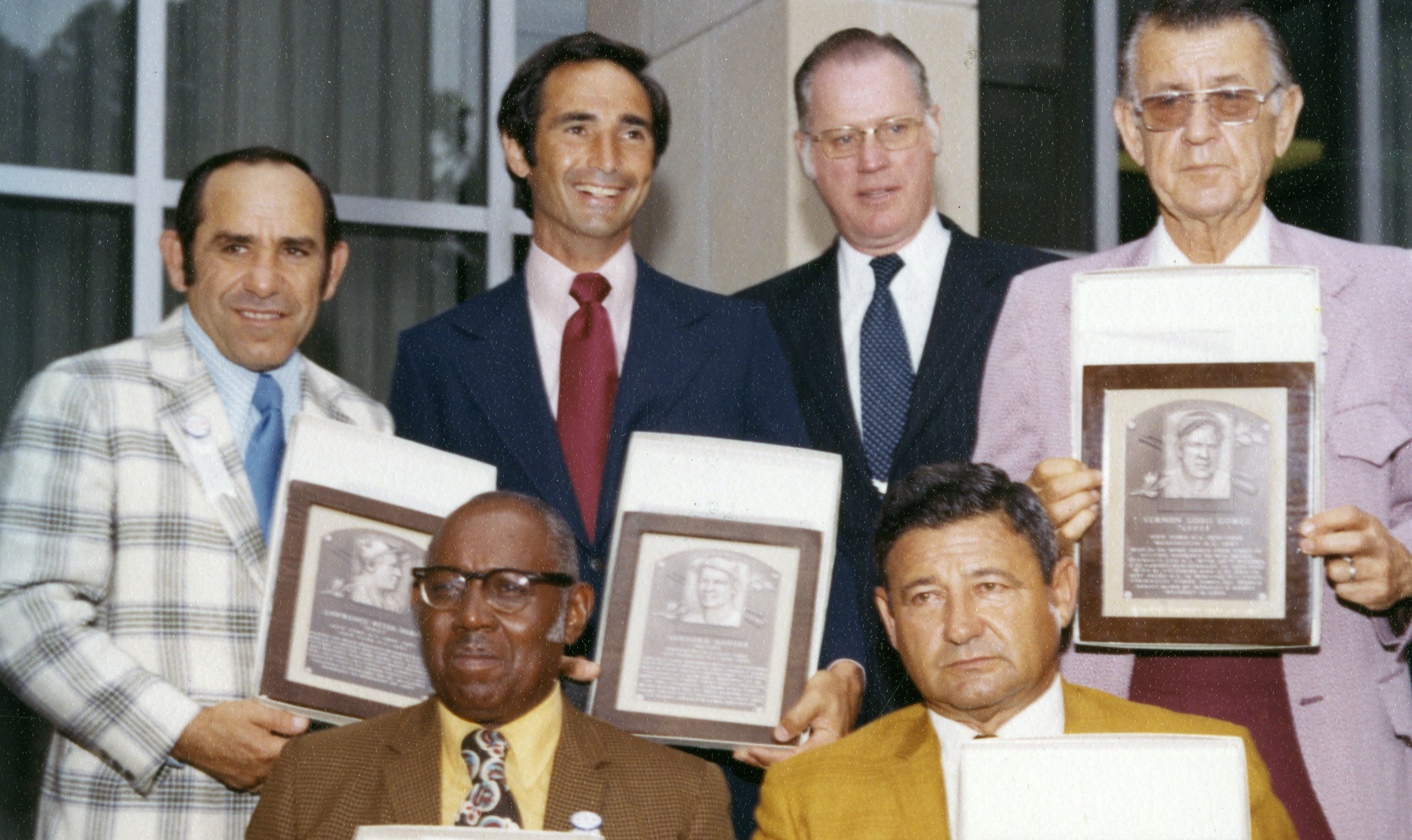
Historic BBWAA Class of ’72 featured Koufax, Berra, Wynn
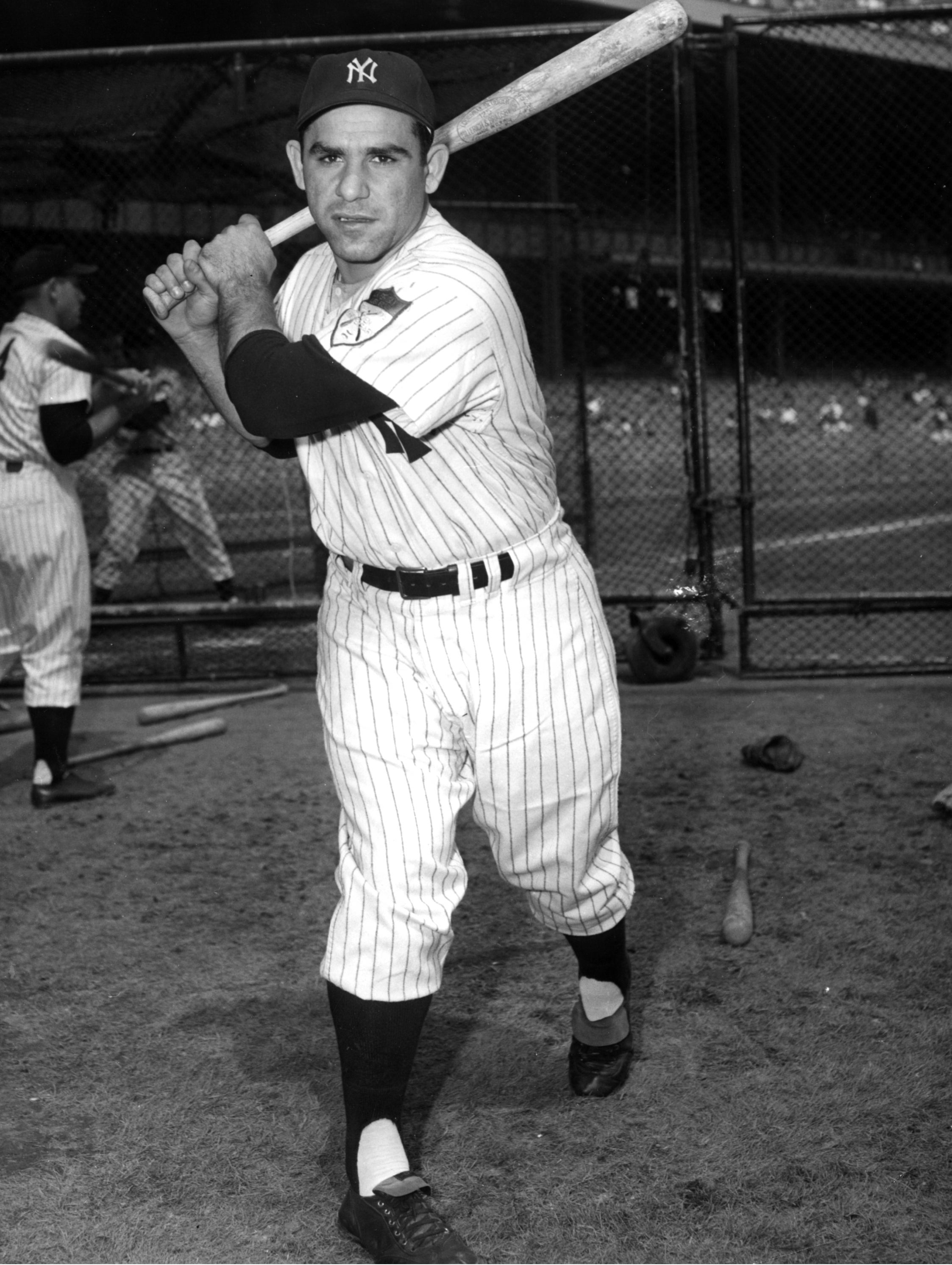
Berra delivers first pinch-hit home run in World Series history
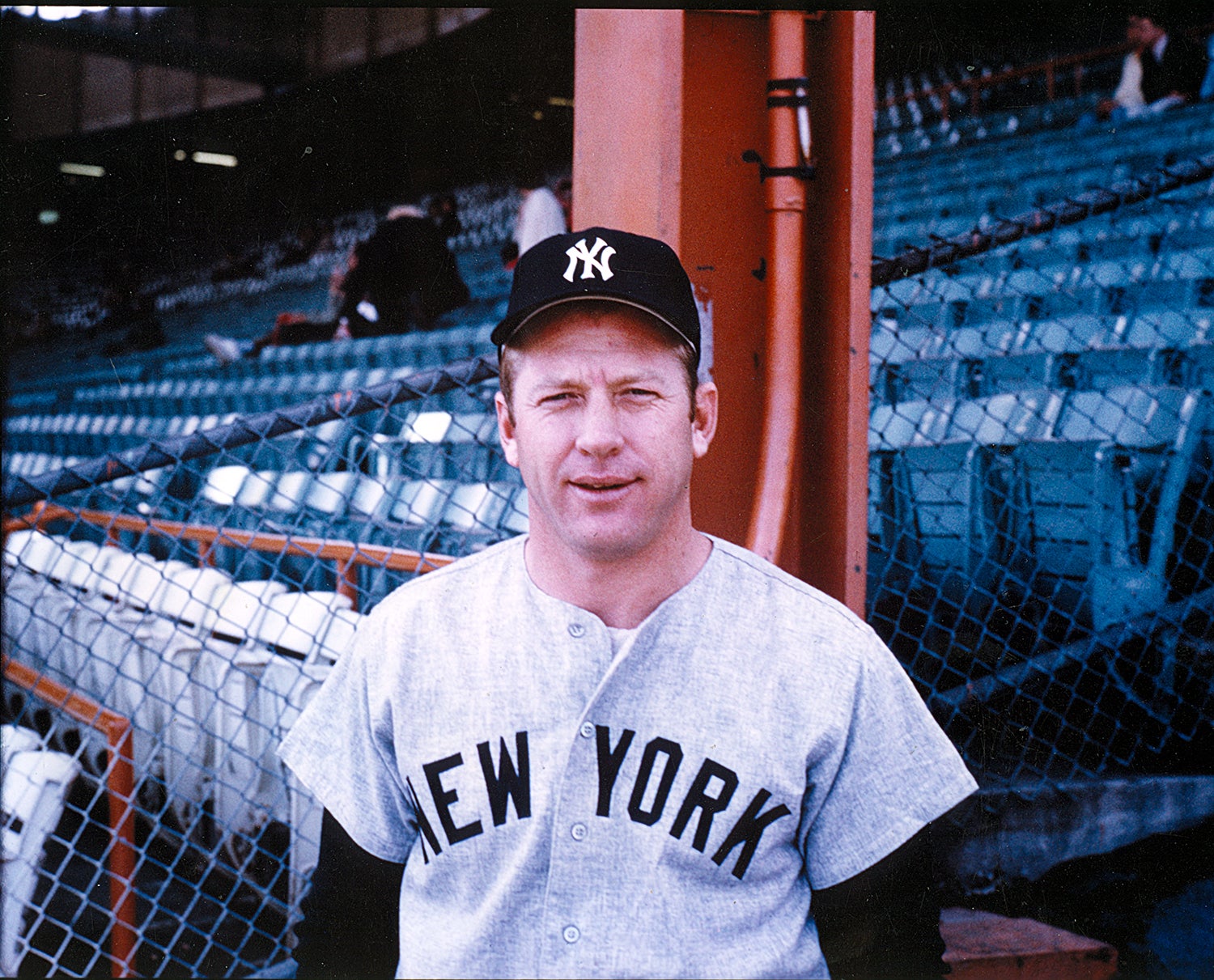
Mickey Mantle announces his retirement from the Yankees



